Who doesn’t like to own a nice pair of sneakers, right? Maybe you love to keep your wardrobe updated with the latest and stylish athletic wear or shoes, like a brand-new pair of Air Jordans. If you are a fan of that particular footwear collection, you might know that it belongs to the brand, Nike.
Nike is an athletic wear and sports footwear brand which has gained worldwide recognition. It has ingrained itself into the fabric of popular culture, influencing trends and shaping consumer behavior around the world.
The brand has become a household name, but have you ever wondered what made this possible? What strategies were incorporated by it? How is it unique and different? What is its current status and what lies in its future? In this blog, we will uncover the marketing strategies of Nike, step-by-step. So, let’s begin!
Nike’s tagline “Just Do It” serves as a motivation, inspiration, and a reminder to the consumers and states that they can overcome obstacles and achieve their goals.
The company was named after the Greek goddess of victory, Nike. Its logo, also known as the Swoosh, depicts motion, speed, and success (in the form of a positive checkmark). It was inspired by the wings of the Greek goddess of victory, Nike.
Nike has established itself as a trusted brand around the world. It is a well known brand in India as well. However, it is not based here. Let’s learn more about Nike’s history and origin.
Origin and History of Nike
Nike was originally known as Blue Ribbon Sports (BRS). It was founded on January 25, 1964, by Bill Bowerman and Phil Knight. The company’s journey began when Knight, a middle-distance runner from the University of Oregon, teamed up with his coach, Bowerman, to distribute athletic shoes made by the Japanese company Onitsuka Tiger (now ASICS).
Operating out of Knight’s car, both of them started selling shoes at track meets and eventually opened their first retail store in Santa Monica, California, in 1966. As the business grew, Knight and Bowerman decided to rebrand the company, officially adopting the name Nike, in 1971.
Nike’s early years were marked by innovation and disruption in the athletic footwear industry. In 1972, the company introduced its first line of Nike-branded shoes, featuring the iconic Swoosh logo designed by Carolyn Davidson. The launch of the ‘Nike Cortez’ running shoe in 1972 and the release of the ‘Waffle Trainer’ in 1974 solidified Nike’s reputation for quality and performance.
Throughout the 1970s and 1980s, Nike continued to innovate and expand its product line, introducing groundbreaking technologies such as Nike Air cushioning and signing endorsement deals with top athletes like Michael Jordan. These strategic moves propelled Nike to the forefront of the athletic footwear market, establishing it as a dominant force in the industry.
Today, Nike is a global leader in athletic apparel and footwear, with a presence in over 190 countries and revenues exceeding $40 billion annually. Nike remains committed to its founding principles of innovation, authenticity, and excellence, continuing to push the boundaries of sportswear and inspire athletes and enthusiasts around the world.
Marketing Strategies of Nike
Now we know about Nike’s history and its principles and values. It employs several key marketing strategies to maintain its position as a leader in the athletic apparel industry. These are:
Iconic Branding:

Nike’s Swoosh logo is one of the most recognizable symbols globally, representing excellence, athleticism, and innovation. The company strategically uses its branding to create emotional connections with consumers, earning their loyalty and trust.
Athlete Endorsements:

Nike partners with top athletes and celebrities across various sports and industries to endorse its products. Some of them include Cristiano Ronaldo, LeBron James, and Serena Williams. It creates aspirational narratives that resonate with consumers and inspire them to achieve their goals.
Innovative Product Design:
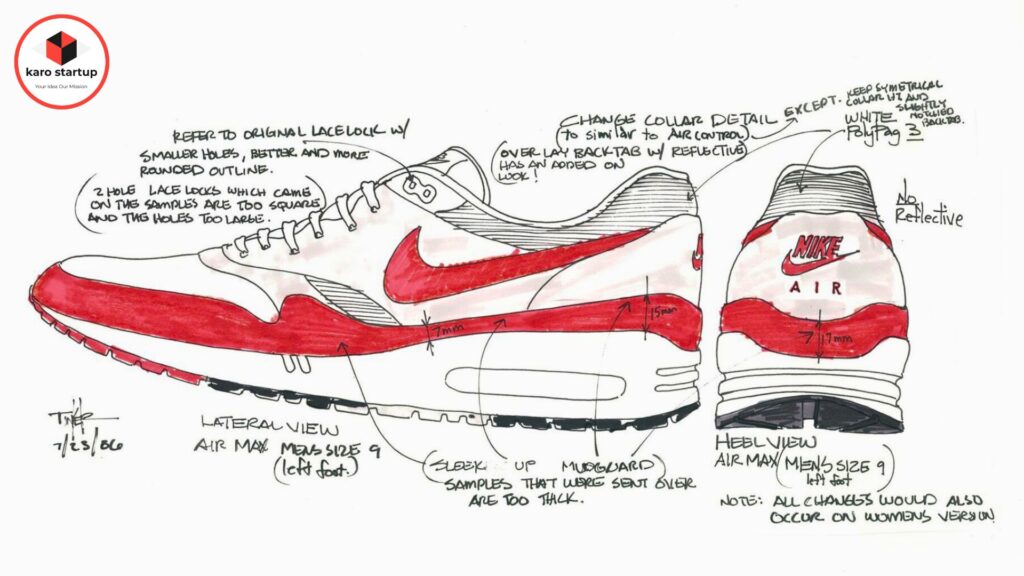
Nike prioritizes innovation in product development, introducing cutting-edge technologies and materials to enhance performance and comfort. From Flyknit to Air Max cushioning, its products push the boundaries of athletic footwear and apparel, setting new standards for quality and functionality.
Compelling Advertising Campaigns:

Nike’s advertising campaigns are known for their creativity, impact, and cultural relevance. The iconic “Just Do It” slogan summarizes its ethics of determination and perseverance, inspiring consumers to overcome challenges and pursue their passions. Its commercials often feature powerful storytelling and showcase athletes overcoming adversity, resonating with audiences on a personal level.
Digital Engagement:
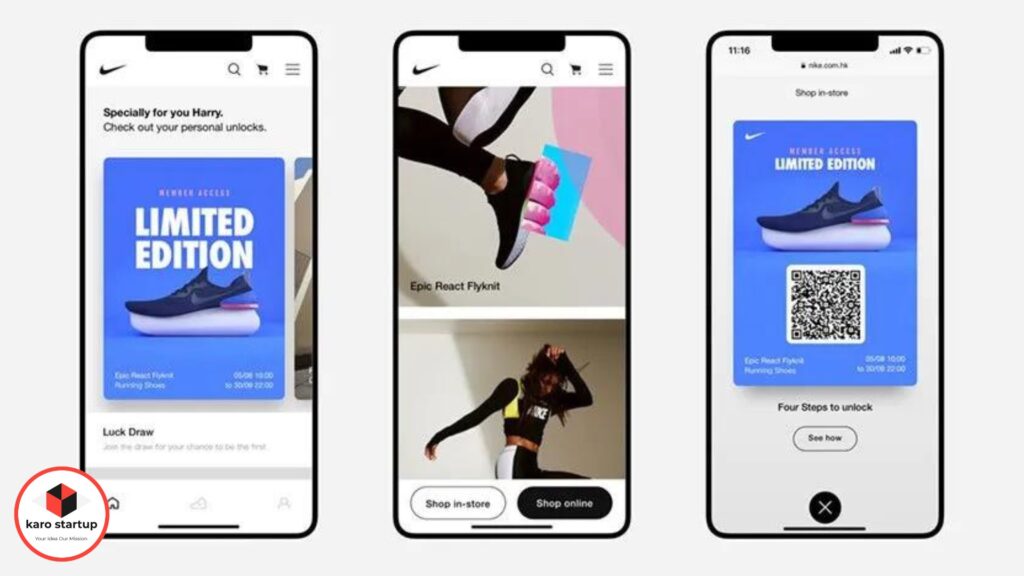
Nike embraces digital platforms to engage with consumers. Through social media, online advertising, and interactive content, it creates immersive experiences that drive consumer engagement. Apart from that, Nike’s mobile apps provide personalized shopping experiences and access to exclusive content.
These are Nike’s marketing strategies which help it in staying ahead of the industry trends through innovation and creativity. These efforts have enabled it to maintain its position as a dominant force in the market.
What are the Other Unique Strategies of Nike?
In addition to its core marketing strategies, Nike employs several unique tactics to stay at the top. These are:
Customization and Personalization:
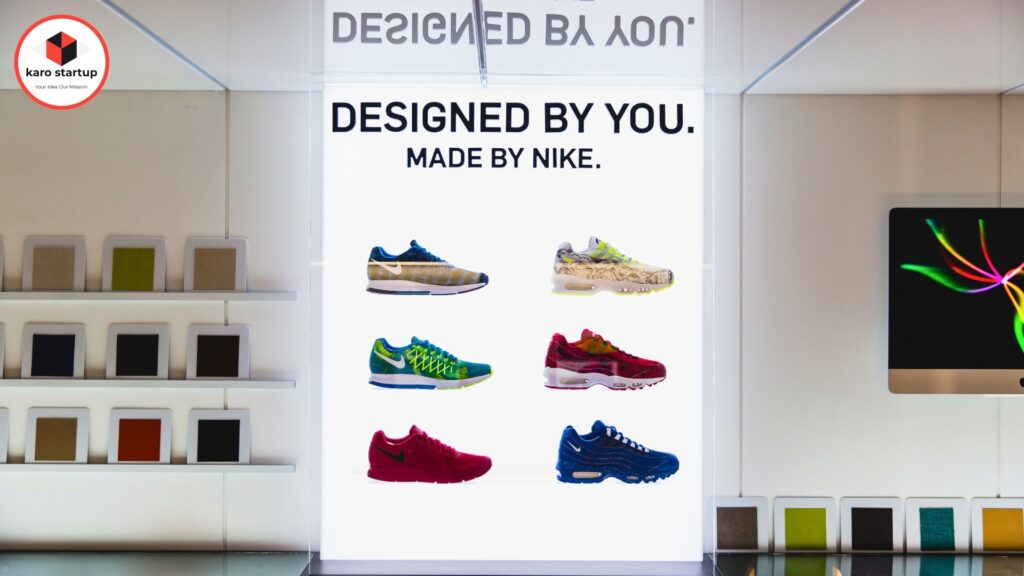
Nike offers customizable options for many of its products, allowing customers to personalize their footwear and apparel with unique colors, patterns, and designs. For example, the ‘NikeID’ platform enables customers to customize their shoes with personalized text, graphics, or colors, creating a truly one-of-a-kind product.
Limited Edition Releases:
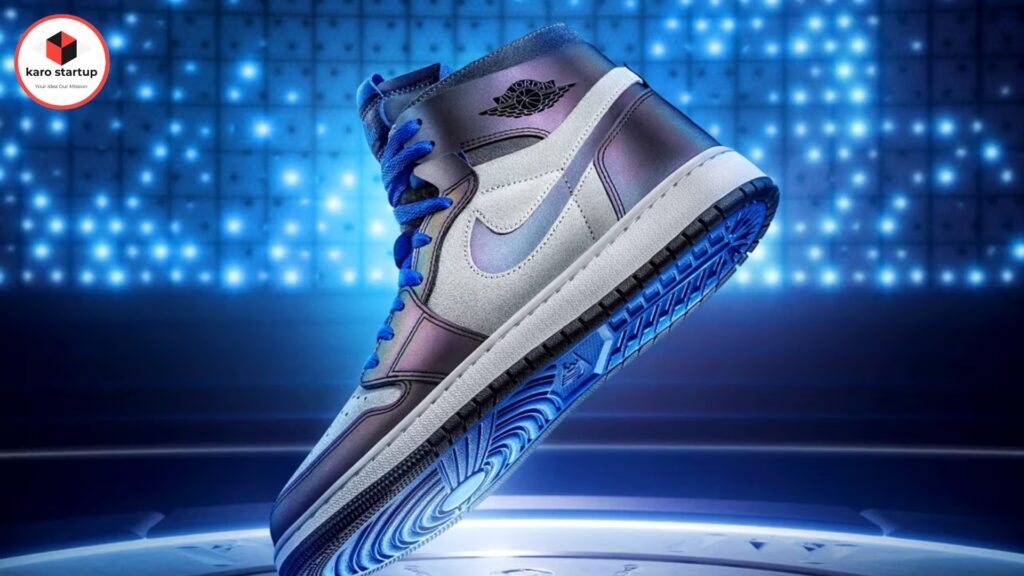
Nike frequently releases limited edition sneakers and apparel collaborations with artists, designers, and celebrities. These exclusive releases generate hype and excitement, driving demand and creating a sense of urgency to purchase.
Community Engagement:
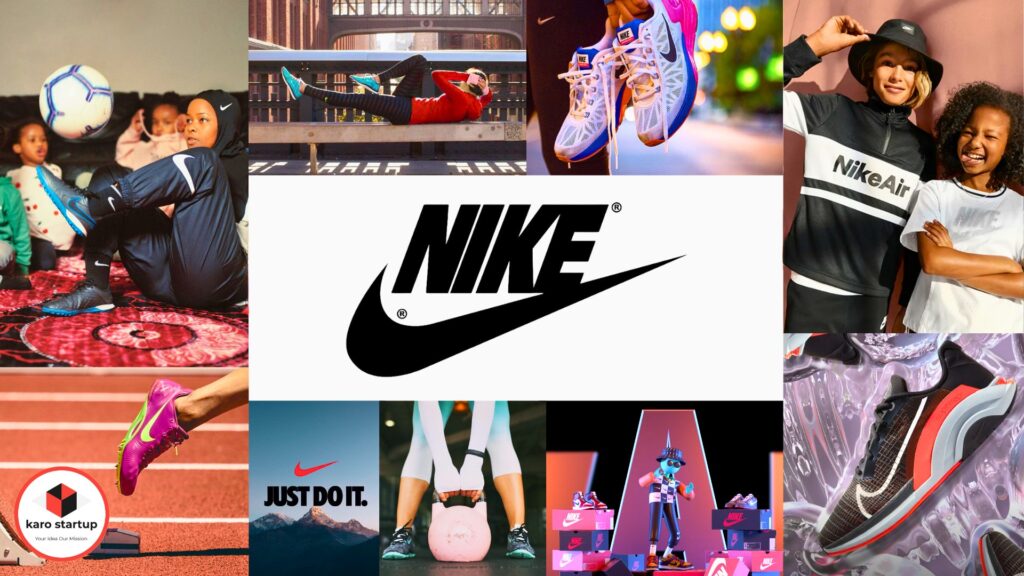
Nike actively engages with local communities through grassroots initiatives, events, and sponsorships. The company supports various sports programs, youth development initiatives, and community events to promote active lifestyles and create a sense of belonging among consumers.
Sustainability Initiatives:
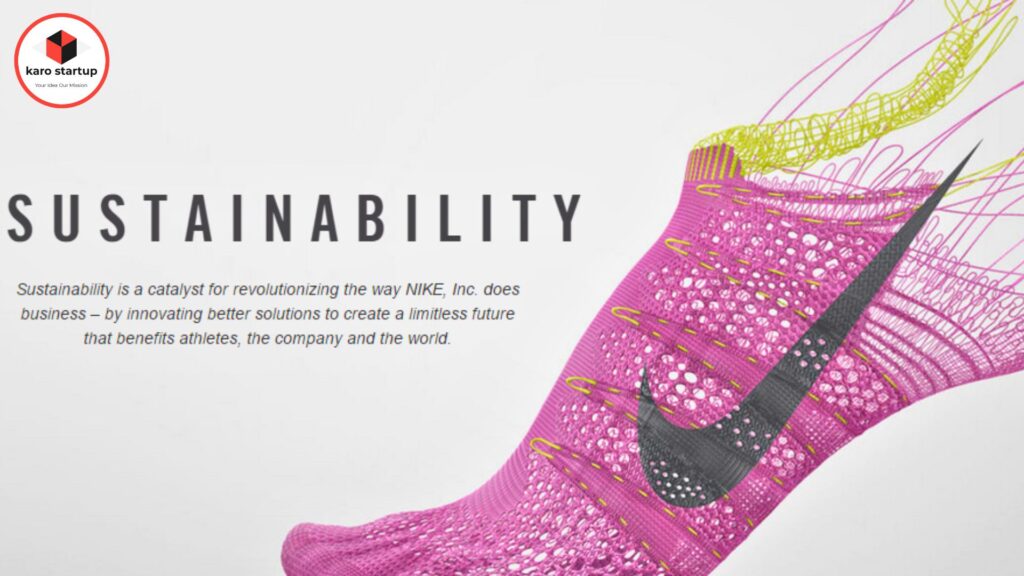
Nike is committed to sustainability and environment protection, incorporating eco-friendly materials and manufacturing processes into its products. The company’s Move to Zero initiative aims to reduce its carbon footprint and eliminate waste throughout its supply chain.
Digital Innovation:
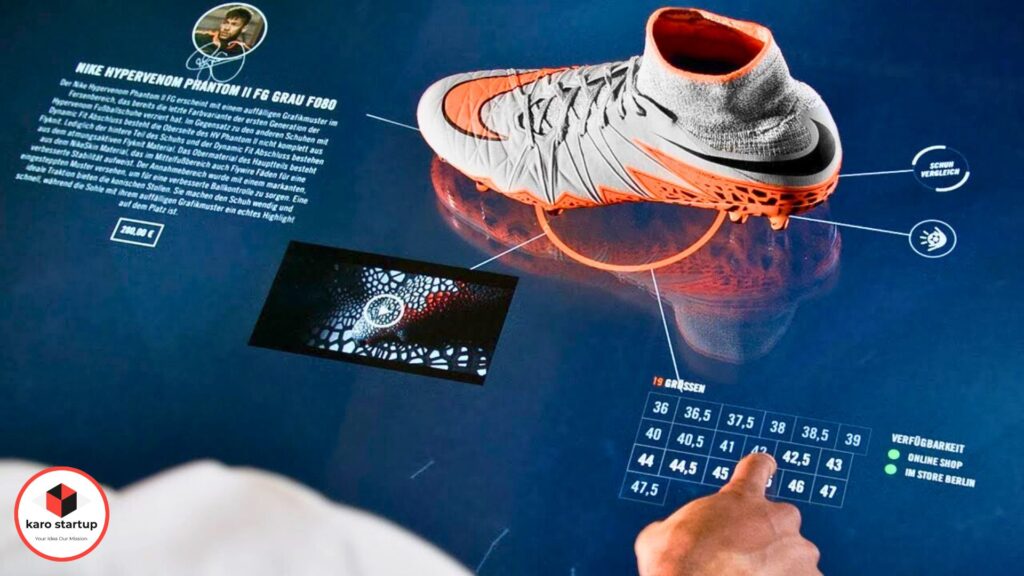
Nike invests heavily in digital technology and innovation. The ‘Nike Run Club’ and ‘Nike Training Club’ apps provide personalized coaching, training plans, and workout tracking, allowing users to stay motivated and connected to the brand.
These unique strategies continue to drive consumer engagement, and maintain Nike’s position as a leader in the industry.
How is it Different from Other Brands?
Nike might be a leading brand in the athletic wear industry, but it has to face competition from other brands. It sets itself apart from other brands through different tactics. Nike’s strong brand identity and iconic Swoosh logo are instantly recognizable worldwide. The brand prioritizes innovation in product design and technology, constantly pushing the boundaries of athletic footwear and apparel.
It has developed cushioning systems like Air Max to revolutionary fabric technologies like Flyknit, and it consistently introduces groundbreaking innovations that set it apart from its competitors.
It also has a long history of partnering with top athletes and celebrities to endorse its products which enhances its brand image and credibility, appealing to a wide range of consumers.
Nike’s advertising campaigns are renowned for their creativity, impact, and cultural relevance and resonate with consumers on a personal level and setting it apart from other brands in the industry.
Thus, Nike’s combination of strong brand image, innovative products, athlete endorsements and compelling marketing campaigns distinguishes it from other brands in the market.
What is Nike’s Current Status?
Nike maintains its position as one of the world’s leading athletic apparel and footwear companies. In fiscal year 2021, Nike reported total revenues of approximately $44.5 billion, reflecting its continued growth and market dominance. Despite challenges faced by the COVID-19 pandemic, its digital sales surged by 59% in 2021, highlighting the company’s adaptability and resilience.
Nike’s strong financial performance is supported by its global presence, with operations spanning over 190 countries and territories. The company’s robust e-commerce platform and digital initiatives have allowed it to connect with consumers worldwide.
In addition to its financial success, the company has set ambitious environmental targets, including a commitment to achieving zero carbon and zero waste across its supply chain by 2050. Nike’s sustainability initiatives, such as its Move to Zero program, underscore its dedication to environment protection and social impact.
Therefore, Nike’s current status reflects its position as a market leader with a strong financial performance, global reach, and a commitment to innovation and sustainability.
What is Nike’s Future?
Nike’s future looks promising as the company continues to focus on innovation, sustainability, and digital growth to drive long-term success. It is well-positioned to capitalize on emerging opportunities and maintain its leadership position.
One key aspect of Nike’s future strategy is its emphasis on digital transformation and e-commerce. It has been investing heavily in its digital platforms and capabilities, aiming to enhance the online shopping experience for consumers and drive sales through digital channels. As consumer preferences shift towards online shopping and digital engagement, Nike’s robust e-commerce infrastructure will be crucial in capturing market share and sustaining growth.
Nike remains committed to innovation in product design and technology and will continue to introduce cutting-edge innovations in footwear, apparel, and equipment. It aims to maintain its reputation for quality, performance, and innovation in the competitive athletic apparel market.
Nike’s focus on sustainability and corporate responsibility will play a significant role in shaping its future. It seeks to minimize its environmental impact and contribute to a more sustainable future.
Overall, Nike’s future success will be driven by its ability to innovate, adapt to changing market dynamics, and uphold its commitment to sustainability and social responsibility. It is well-positioned to thrive in the years ahead.
Some More Stories
Conclusion
In conclusion, Nike is a renowned brand. It has earned the loyalty and trust of consumers through years strategic marketing techniques. It is going to keep adapting to new market practices and innovate its products. It will definitely continue its growth and expansion around the world.
Nike’s future appears bright as the brand continues to innovate, and adapt according to the ever-changing consumer demand and preferences. It is focused on sustainability, digital transformation, and social responsibility.
Nike has consistently demonstrated its ability to stay ahead of the curve and capture the imagination of millions. It is well-positioned to navigate the challenges of the future while continuing to inspire and empower athletes of all levels to push their limits and ‘Just Do It’.
Frequently Asked Questions (FAQs)
Who founded Nike?
Nike was founded on January 25, 1964, by Bill Bowerman and Phil Knight.
What does ‘Nike’ stand for?
Nike was named after the Greek goddess of victory.
What is Nike’s logo?
Nike’s logo is called the “Swoosh”, depicts motion, speed, and success. The logo is in the form of a positive checkmark.
What is Nike’s tagline?
Nike’s tagline is “Just Do It” which serves as motivation, inspiration, and a reminder to the consumers and tells that they can overcome obstacles and achieve their goals.
Where is Nike’s headquarters?
Nike’s headquarters are in Beaverton, Oregon, United States. Oregon is central to the story of the brand and home to the Nike’s World Headquarters.




